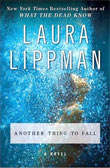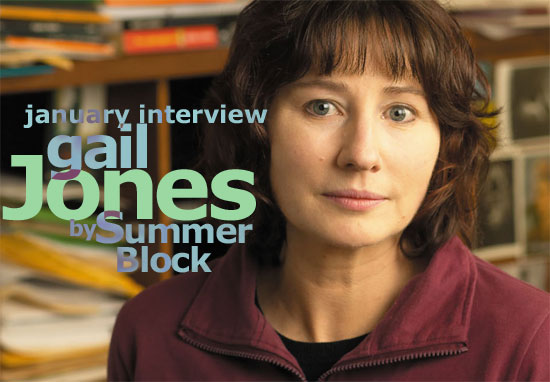You could spend some time trying to get a handle on Jim Krusoe: trying to pin him down firmly enough to be able to w

rite about him in a way that those unfamiliar with his work would find illuminating.
Sure, you can cover the basics. Cleveland born, Krusoe has lived for many years in Los Angeles where he teaches creative writing, specifically at Antioch University and Santa Monica College.
Krusoe founded
The Santa Monica Review in 1988. It’s a well respected literary journal published by Santa Monica College. He is the author of five books of poetry, a collection of short stories called
Blood Lake and two novels:
Iceland and the newly published
Girl Factory (Tin House Books). He is the recipient of fellowships from the National Endowment for the Arts and the Lila Wallace
Reader’s Digest Fund.
None of this really explains who Krusoe is: what drives him, what moves him and what -- forgive me -- makes him tick. It can’t, in a way. The closer you get, it seems, the more he manages to obscure himself. You see passion. You see talent. Beyond that, I’d wager he wants you to see his words.
 A Snapshot of Jim Krusoe...
A Snapshot of Jim Krusoe...Born: Cleveland, Ohio
Resides: Los Angeles, USA
Please tell us about your most recent book.Girl Factory is about a guy who discovers six young women suspended in acidophilus in the basement of the yogurt store where he works. He’s trying to find a way to bring them back to life. In this process one of the questions I asked myself was: what does it mean to try to help someone? I’m afraid the results are mixed, at best.
What’s on your nightstand?My nightstand has only a lamp, the base of which was cracked when one of the cats knocked it over one morning about three, and where I tried to fix it there’s a thick unsightly ooze of hardened white glue. In the drawer beneath it, however, is a Yugioh card my son left about a year ago, a flashlight, a sock, three paperclips, a tape measure, a screwdriver, a kid’s Halloween mask, several pens, a salt shaker, a twig, two screws, a book of chess openings, several of my wife’s elastic hair-ties, a few sheets of lined notebook paper, and a small stone. Missing are the toenail clippers I’ve trying to find for a week.
What are you working on now?I’m working on a book about a son who gets a postcard from his dead mother in Cleveland. She says she needs him to visit her right away.
Tell us about your process.I love to use fountain pens because they slow me down. My process is as follows: I start with an image or something (in the case of
Girl Factory it was yogurt) that won’t go away, because something about it bothers me. Then I accumulate as much material as possible around that image. When I have a couple hundred pages, I try to figure out what I don’t need and what’s missing.
I like to describe the writing process as follows: You have been put into a room with lots and lots of boxes, and are told that some, but not all, are the parts to a machine you need to assemble. No one tells you what kind of a machine it is or what its supposed to do. So you work for a long, long time, and eventually it looks as if you may be on the right tra

ck. Then there’s a knock at the door. Standing in the doorway is a UPS guy standing next to a stack of about 50 more boxes. “They forgot to give you these,” he says. “Do you want to sign for them?”
Lift your head and look around. What do you see?I’m on the couch in the front room with a dog lying on either side of me. The big one is sighing at something outside the window, and the terrier is just asleep on her back, feet stuck straight out. Cars pass in the street. It’s mid-day, and my daughter is home from school, sick, but not too sick to work on her computer a room away. Every so often she yells out some fact she’s discovered about the report she’s writing for school. It’s about multiple intelligences, something we both are in favor of.
When did you know you wanted to be a writer?In first grade, when they tested us for color-blindness, all the other kids could read the number six inside the dots, and I couldn’t.
If you couldn’t write books, what would you be doing?Books or no books aren’t important, but I can’t imagine myself not writing.
To date, what moment in your career has made you happiest?I don’t think about a career. I write to make sense out of the world, and that’s that.
For you, what is the easiest thing about being writer?Writing.
What’s the most difficult?Writing well.
What question do you get asked about your writing most often?Where do you get your ideas?
What’s the question you’d like to be asked?How many drafts to you do? (The answer is about 40, and the reason I like to tell is to let others know the process is a long one. When I began to write I imagined a novel would be finished after about three drafts, and I worry too many other writers may set an artificial limit on when they decide a book is finished. For me, and much to my surprise, the process of revision is as pleasurable, or maybe more so, than the actual imagining.)
Tell us something about yourself that no one knows.I don’t watch television, except for slow-speed police chases which, I’m beginning to think, are the metaphor for my life.
Labels: Author Snapshot, interview
 their award-winning restaurant was hard won. They have no family memories of this type of cuisine, no recipes from Aunt Delia to fall back on. On a trip to Memphis, they tried barbecue, fell in love then decided to import their new passion to Vancouver.
their award-winning restaurant was hard won. They have no family memories of this type of cuisine, no recipes from Aunt Delia to fall back on. On a trip to Memphis, they tried barbecue, fell in love then decided to import their new passion to Vancouver.




































